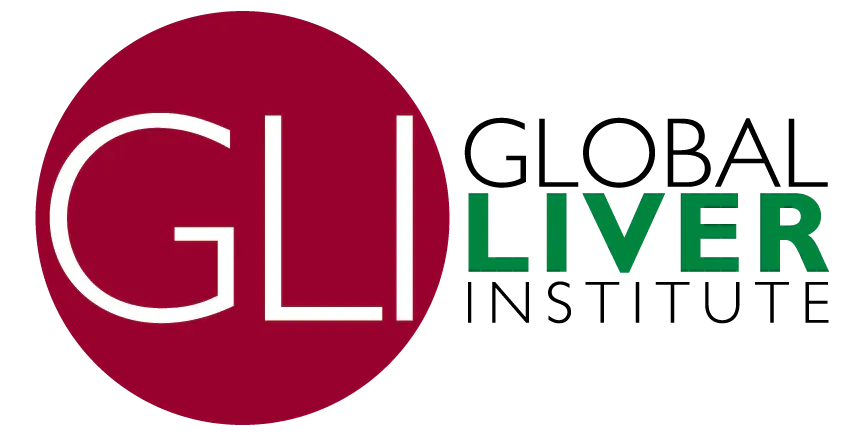
NASH Affects Millions, But the Future for Treatment Remains Brighter Than Ever

Emerging treatments, collaboration between health care providers, and new policy proposals have led to a positive outlook for the future of nonalcoholic steatohepatitis (NASH) and its treatment.
Nonalcoholic steatohepatitis (NASH) is the most severe form of nonalcoholic fatty liver disease (NAFLD). If the effects of liver damage are long-term or severe, scar tissue eventually replaces liver tissue through fibrosis, leading to cirrhosis, which is when irreversible liver damage prevents the organ from functioning effectively. Between 7% and 30% of patients with NAFLD develop NASH.1
NAFLD is the most common chronic liver disease in the United States.2 Notably, most people with this disease have a fatty liver without inflammation, but 20% of people with NAFLD develop NASH. Estimates indicate that over 100 million adults across the world are impacted by NASH.2
Better understanding of the disease, it’s symptoms, options for management, and the future of treatment is essential to provide tailored care to patients with NASH.
Risk Factors for NASH
The symptoms of NASH are linked to the progression of cirrhosis, which worsens as fibrosis spreads. Although these symptoms often don’t outwardly appear, they can include weakness, edema, jaundice, loss of appetite, and others. Vein scarring can lead to increased blood vessel pressure; these swollen vessels can then rupture, causing catastrophic internal bleeding.1
What causes NASH remains unclear, but it is most common in patients who are obese or overweight. Given this, risk factors include poor diet, diabetes, high cholesterol, high triglycerides, and sleep apnea.3
Specific populations remain at a higher risk for NASH based on their socioeconomic status or their gender/sexual identity. Jeff J. McIntyre, vice president, liver health programs at the Global Liver Institute (GLI) in Washington, DC, discussed the propensity for a disease such as NASH to be a “poor person’s disease” because of the inability for some patients to pay for expensive weight loss or cholesterol medications that can ease the burden of NASH.4
“In order for this disease to be truly treated and truly scaled to where it’s going to have the highest impact possible, it has to be addressed through managed care and has to be addressed through pharmacists being able to have coverage for medications for those most in need,” McIntyre said in
Beyond those who may be at increased economic burden, NASH can disproportionately affect LGBTQI+ patients. These patients can experience stigma and discrimination when seeking access to health-improving treatment for liver disease or primary liver cancer. Additionally, this population can have high rates of alcohol use, which can lead to cirrhosis.5
The risk of cirrhosis is even higher in transgender individuals, according to a study published in the American Journal of Gastroenterology. The study found that transgender adults have double the occurrence of cirrhosis compared to cisgender adults, and that alcohol was the leading cause of cirrhosis in the transgender population.6
Viral hepatitis, targeted marketing for alcohol and tobacco products, high prevalence of metabolic disease—which can be a major risk factor for patients infected with HIV—and instability regarding housing or insurance, all particularly affect LGBTQI+ individuals.In conjunction with the fact that low-income individuals face a higher risk of NASH, 41% of LGBTQI+ individuals live below the poverty line.5
There is clearly an unmet need among these populations regarding the incidence of NASH, and treatment options and initiatives should have an emphasis on these individuals to ensure equity.
Managing NASH in Diverse Populations
Managing NASH—for all populations—can be difficult. There is no standard, widespread treatment available for patients with NASH; therefore, lifestyle changes are the typical recommendations made to patients, and have been shown to improve the condition and quality of life for patients with NASH.
People who have obesity or who are overweight are at a higher risk of NASH, and they can improve their condition by limiting their portion sizes, being physically active, and making healthy food choices. Losing at least 3% to 5% of your body weight can reduce fat deposits in the liver; losing 7% to 10% can reduce fibrosis and accompanying liver inflammation. However, doctors caution to not rapidly lose weight, as that process—and the associated malnutrition used to lose weight—can make liver disease worse.7
Although there are no standard treatments, progress has been made in evaluating new drugs to treat NASH. In March 2024, the FDA approved the first treatment—resmetirom (Rezdiffra; Madrigal Pharmaceuticals)—for patients with NASH who have moderate-to-advanced liver scarring, providing for the first time a treatment for the notable scarring associated with NASH.8 At a 12-month follow-up point in a safety and efficacy trial, liver biopsies indicated that a greater proportion of subjects who were treated with resmetirom achieved NASH resolution or improvement in their liver scarring compared to those who received a placebo, according to the authors of the study published in the New England Journal of Medicine.9
Other alternative treatments, which limited studies have indicated as potential pathways for the reduction of NASH, include drinking caffeinated coffee—studies suggest that over 2 cups per day reduces the risk of liver fibrosis—and vitamin E, which evidence suggests can reduce fat and inflammation.10
In terms of education and counseling, it can be valuable for pharmacists to provide education to patients who may be interested in pursuing alternative, novel, or unproven remedies for NASH, as some—such as herbal remedies or supplements—can worsen liver damage further.2
The Future of NASH
With the FDA approval of resmetirom and other treatments being developed, the landscape of NASH has arguably never looked more positive. However, it’s important that, in the absence of a wide array of treatment options, pharmacists continue to facilitate access to care for patients with the disease.4
For pharmacists and other health care professionals, McIntyre emphasized the importance of awareness of the symptoms of NASH, as they can be confused them with symptoms of other diseases, such as diabetes. Such a confusion can lead to incorrect treatment for patients.4
“Often diabetes is what is emphasized, and fatty liver is kind of left alone until it’s advanced, until a more significant or more critical state,” McIntyre said in the interview. “Pharmacists are really important in terms of looking at what sort of range of medications a patient may be able to be on…or whether there needs to be some sort of diagnostic effort for liver disease while they’re also combating some sort of diabetes or cardiometabolic disease as well.”4
As new treatments become available, it is valuable for pharmacists to become familiar with their use in practice for treatment. Additionally, counseling on the benefits of lifestyle changes, such as exercise and healthy eating choices, remains important for pharmacists.
Legislation can also make a huge impact in educating patients on NASH and providing funds for more research to discover additional NASH treatments. The GLI provides liver health policy updates, calling for support towards initiatives at the state and federal level that “support access to comprehensive care for liver disease.”11
In early May 2024, the Liver Illness, Visibility, Education and Research Act (LIVER Act) was reintroduced in Congress by Representative Nydia Velázquez (D, New York) after originally being introduced in 2018. The bill would redouble the federal government’s efforts to prevent, study, and treat liver cancer, in part by allowing hospitals and health care facilities to receive funding for experimental prevention and treatment programs, according to a statement from Representative Velázquez’s office.12
The GLI has also pushed for better access to NASH treatment for veterans. In a letter to the US Department of Veterans Affairs, they expressed concern with the agency’s intention to utilize criteria for use for resmetirom that include the recommendation of a biopsy, which is contrary to FDA guidelines and can “further delay access to care.”11
NASH remains a life-threatening disease for millions across the country. Yet, the emergence of effective treatment possibilities, support and lobbying from key interest groups, and an optimized approach to treatment from pharmacists make for a positive outlook on the future.
REFERENCES
1. MedlinePlus. Non-alcoholic fatty liver disease. National Library of Medicine (US). Accessed July 15, 2024. https://medlineplus.gov/genetics/condition/non-alcoholic-fatty-liver-disease/
2. Pfizer. NASH. News Release. Accessed July 15, 2024. https://www.pfizer.com/disease-and-conditions/nash#:~:text=Nonalcoholic%20steatohepatitis%2C%20or%20NASH%2C%20is,waste%20products%2C%20and%20remove%20toxins.
3. Cedars-Sinai. Non-alcoholic Steatohepatitis (NASH). Accessed July 15, 2024. https://www.cedars-sinai.org/health-library/diseases-and-conditions/n/non-alcoholic-steatohepatitis-nash.html
4. McIntyre J. Pharmacists can optimize treatment for patients with NASH, decreasing economic burden. Pharmacy Times. October 18, 2023. Accessed July 15, 2024. https://www.pharmacytimes.com/view/pharmacists-can-optimize-treatment-for-patients-with-nash-decreasing-economic-burden
5. Global Liver Institute, National LGBTQI+ Cancer Network. The outsized impact of liver cancer on the LGBTQI+ population. Liver Central. Accessed July 15, 2024. https://livercentral.org/wp-content/uploads/2024/06/LGBTQ-GLI-One-Pager-1.pdf
6. Keck Medicine of USC. Cirrhosis affects twice as many transgender adults as cisgender adults. News Release. July 10, 2024. Accessed July 18, 2024. https://news.keckmedicine.org/transgender-adults-have-double-the-prevalence-of-cirrhosis-as-cisgender-adults/
7. National Institute of Diabetes and Digestive and Kidney Diseases. Treatment for NAFLD & NASH. Updated April 2021. Accessed July 18, 2024. https://www.niddk.nih.gov/health-information/liver-disease/nafld-nash/treatment
8. FDA. FDA approves first treatment for patients with liver scarring due to fatty liver disease. News Release. March 14, 2024. Accessed July 18, 2024. https://www.fda.gov/news-events/press-announcements/fda-approves-first-treatment-patients-liver-scarring-due-fatty-liver-disease
9. Harrison SA, Bedossa P, Guy CD, et al. A phase 3, randomized, controlled trial of resmetirom in NASH with liver fibrosis. N Engl J Med. 2024;390(6):497-509. doi:10.1056/NEJMoa2309000
10. American Liver Foundation. Nonalcoholic fatty liver disease and nonalcoholic steatohepatitis treatment. Updated July 5, 2024. Accessed July 18, 2024. https://liverfoundation.org/liver-diseases/fatty-liver-disease/nonalcoholic-steatohepatitis-nash/nash-treatment/
11. Global Liver Institute. Liver Health Policy Update. Accessed July 18, 2024. https://globalliver.org/access-to-care-takes-center-stage-for-liver-disease-patients-liver-health-policy-update/
12. Congresswoman Nydia Velázquez. Velázquez introduces bicameral LIVER Act. News Release. October 21, 2021. Accessed July 18, 2024. https://velazquez.house.gov/media-center/press-releases/vel-zquez-introduces-bicameral-liver-act#:~:text=Vel%C3%A1zquez%20(D%2DNY)%20today,is%20detected%20early%2C%20said%20Vel%C3%A1zquez.
Newsletter
Stay informed on drug updates, treatment guidelines, and pharmacy practice trends—subscribe to Pharmacy Times for weekly clinical insights.


















































































































































































































